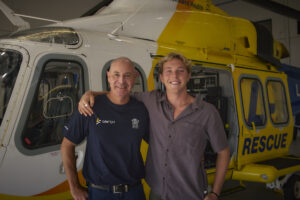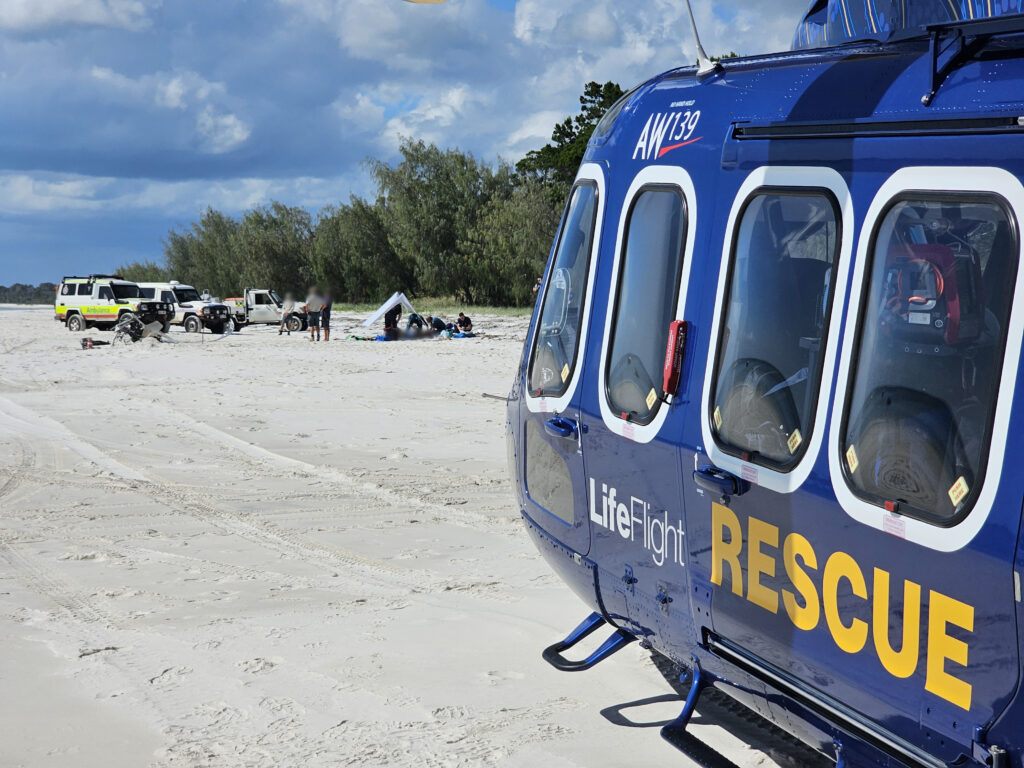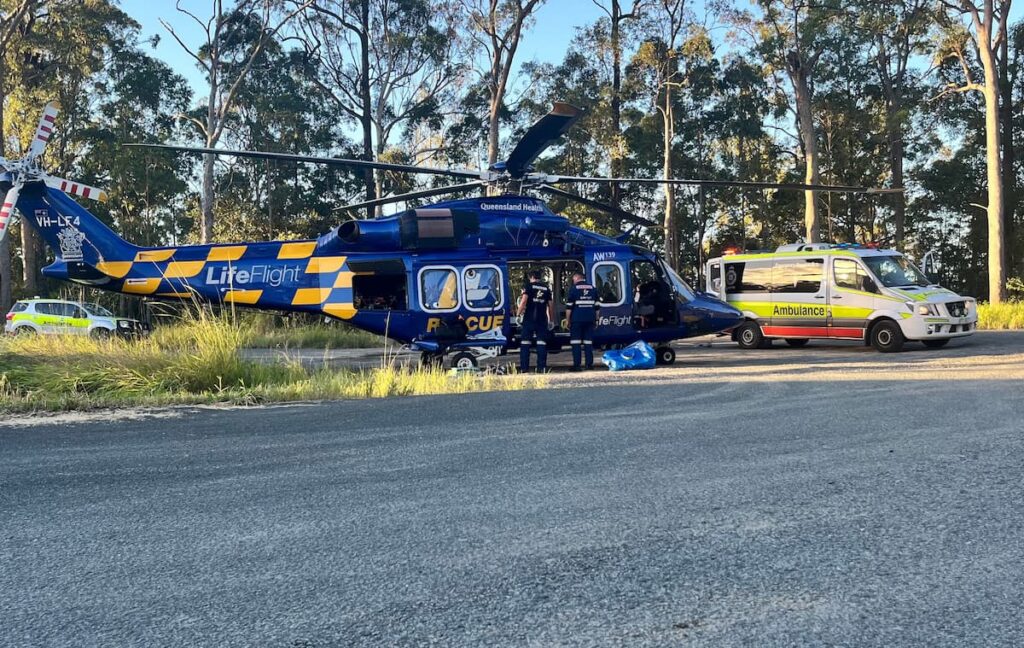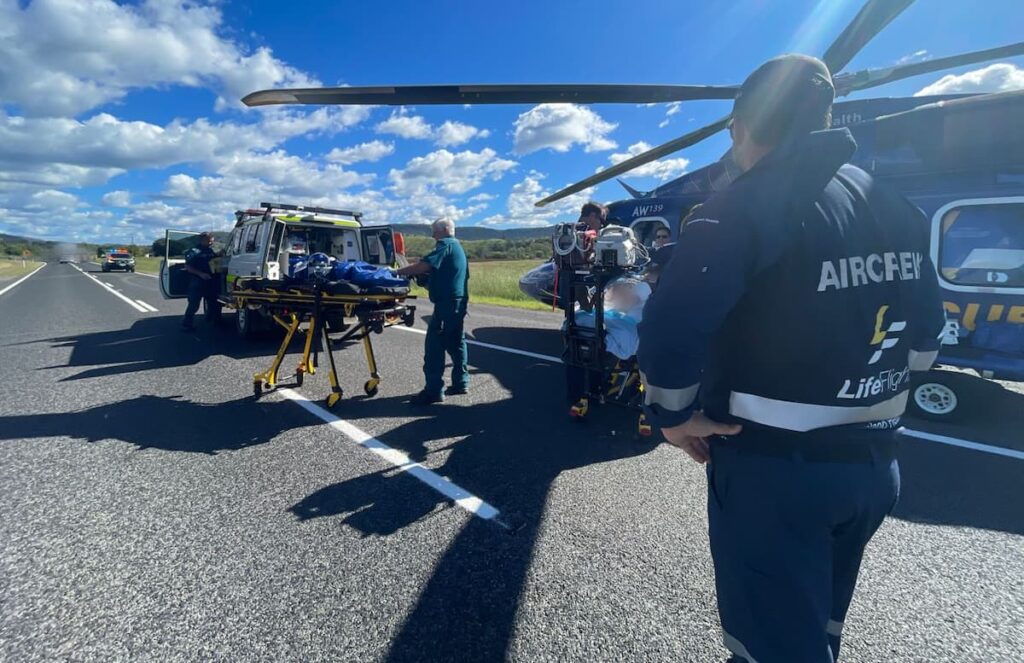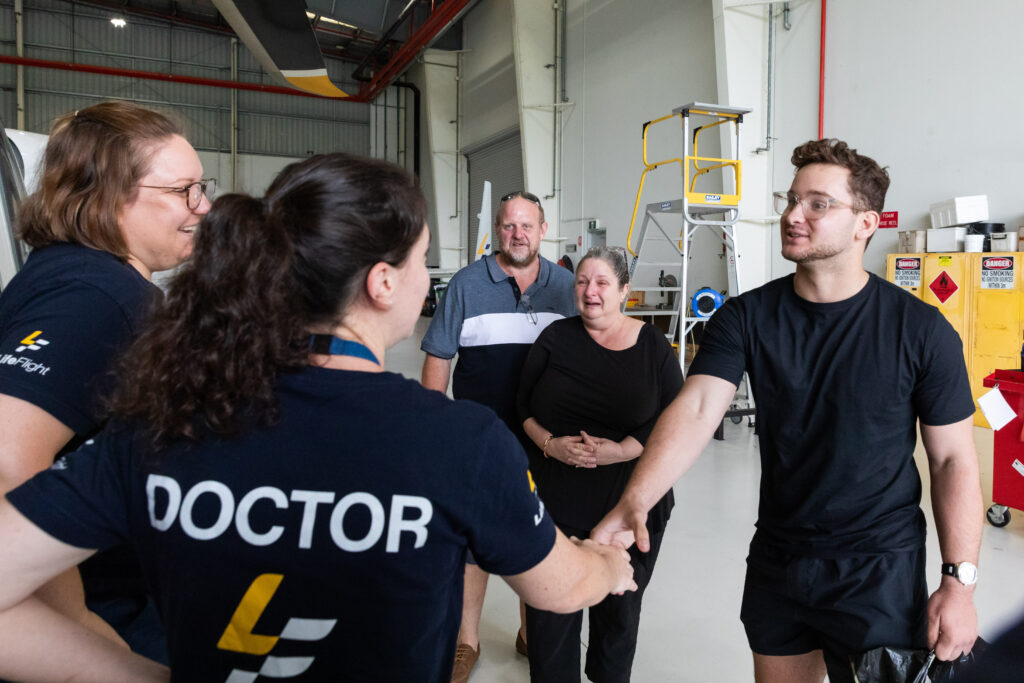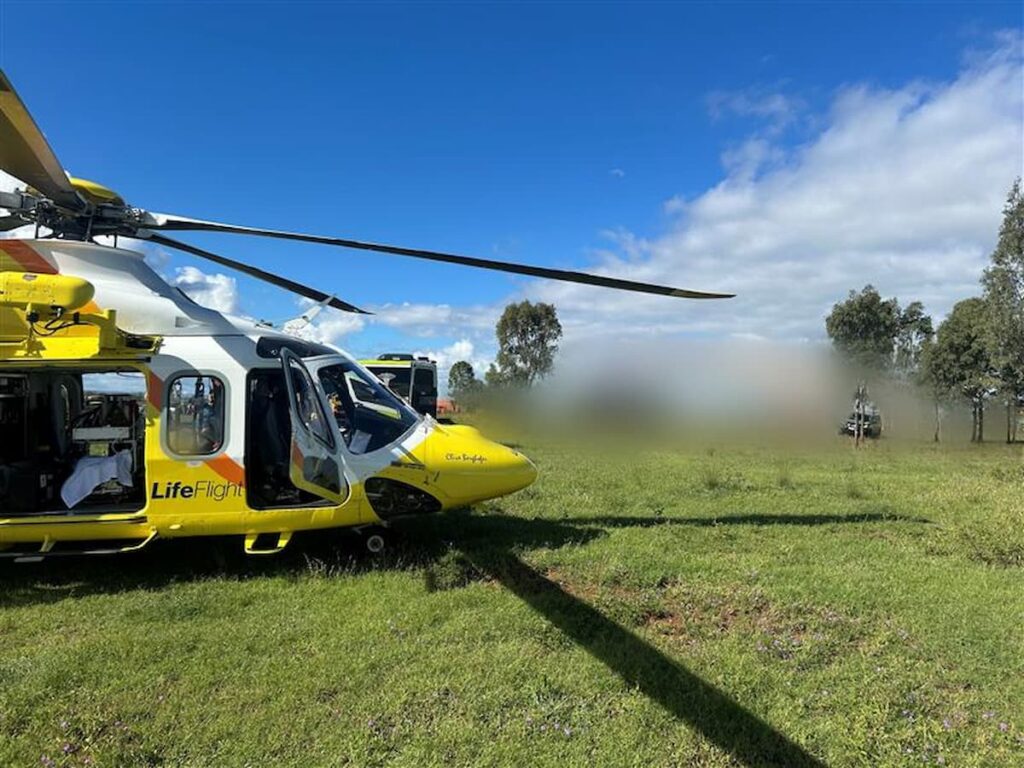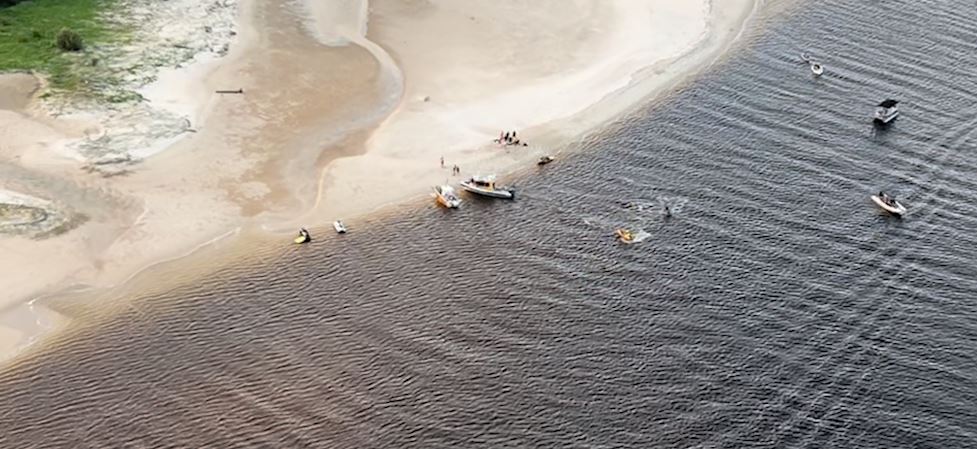Seconds after crashing his paraglider into a Rainbow Beach sandstone cliff, experienced adventurer Maverick Robbins pulled out his mobile phone from his chest pocket to call for a rescue helicopter.
The Gold Coast university student was 80 metres down a 100-metre cliff with his upper body slumped over an unstable, sandy ledge and his legs dangling off to a 20-metre sheer drop down to the beach. He was holding onto a small, shallow-rooted salt scrub as an anchor, couldn’t feel his legs and had just broken his back in three places.
In his three-minute Triple Zero (000) call just before sunset, the Hawaii-born adventurer asked the Queensland Ambulance Service (QAS) operator for a rescue helicopter.
“I think I need a helicopter,” Maverick told the operator. “I am at Rainbow Beach paragliding on the south side. I’ve crashed the paraglider in the sand. How soon can the helicopter be here? I am way up the hill. The only accessible way to get to me is in a helicopter.”
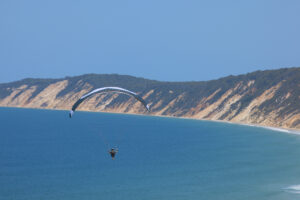
It took Maverick’s paragliding buddy Vinny Brazier about 20 minutes to land on a small, sandy strip just above his mate. His priority was disconnecting the paraglider so it wouldn’t suddenly reinflate. As he flew past him, he yelled out ‘are you okay?’ and Mav looked up but didn’t give a thumbs up.
“So, I knew he was in trouble,” Vinny said. “I ran over to Mav to assess his condition. I helped adjust his legs, so he had a better perch on the small bush and the sand that was holding him up.”
At the same time, a team of Rainbow Beach and Tin Can Bay Queensland Fire Department (QFD) firefighters were driving towards the crash site.
And at Marcoola on the Sunshine Coast a rescue helicopter crew who had just walked into the LifeFlight base to start their shift, was loading winch rescue gear into the chopper and preparing to take off.
Inside that chopper critical care doctor Carly Silvester, QAS paramedic Santosh Broom and rescue crew officer Callum Good were finishing their final checks before they were winched down onto the dark, steep, sandy, slope.
Aaron Regan has been flying for 35 years and for 25 years as a rescue helicopter pilot. He was in the LifeFlight pilot’s seat on the moonless, heavy-clouded, “really dark night” of October 22, 2024. Sitting beside him was air crewman Ben Bourne who provided word pictures for Aaron during the rescue so that he knew what was happening under the aircraft and which way and how far he needed to move the chopper.”
Maverick and Vinny watched the LifeFlight helicopter on a Flightradar app as it ‘crept’ towards them. Maverick’s parents Chris and Christina were using the same technology, glued to their mobile phones, 7500 kilometres away.
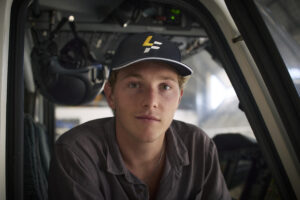
“When the sounds of the chopper came overhead, it was the biggest relief,” Maverick said. “Because I knew they were going to get me out of there.”
Two firefighters in a Polaris made it to the top of the cliff just off the Cooloola Great Walk track south of Carlow Sandblow and just above Maverick. The ATV lights helped guide Aaron in.
“This was one of the most challenging rescues I’ve had to do in my career,” Aaron said.
“Any night winch of NVGs (night vision goggles) is challenging and the terrain and weather and the recirculation of the sand made it difficult and meant we had to hover much higher than we wanted just to maintain a visual reference and get out of the recirculating sand.”
The helicopter was 200 feet above the cliffs when the LifeFlight rescue team was winched down – more than double the usual winch height.
Despite his efforts to reduce the sand blast, and even from 100 metres away, the rotor wash from the 139 was so fierce it almost destroyed the sand structure around Maverick.
“I could feel the ledge erode from under my waist,” Maverick said. “Then it eroded from under my stomach, and thankfully, just before it got to my upper body, the helicopter flew further away. I was very scared. I didn’t know the extent of my injuries. I was in so much shock.”
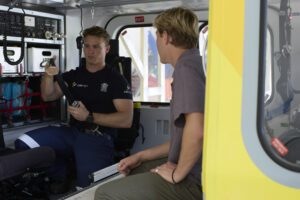
It was Callum Good’s job to make sure the precarious rescue site was as safe as possible. The sand blast was so intense he was swallowing sand and finding it difficult to breathe. “It was extremely tricky,” Callum said. “It was a challenging spot to maneuver around on foot, let alone winch. Having such fine sand, such a slope to walk across…it was extremely challenging. You just go straight into ‘how are we going to get him out’?”
Critical care doctor Carly Silvester slipped twice on the way over to Maverick. As soon as she reached him, she looked him in the eyes, put her hand on his and told him everything was going to be okay.
“The rescue itself was a really big job,” Dr Silvester said. “It was a mission that you don’t do very often as an organisation or as an individual. And it was a challenge for everyone involved. It took a lot of experience and knowledge and years of training to be able to do that safely. What was a really high-risk scenario, turned into something that was cool, calm and controlled.”
She said she and her crew relied heavily on teamwork and the experience and expertise of the three firefighters who had clambered down the cliff using a long rope that they later cut up to help them carefully pull Maverick up and over the ridge line.
“They bring decades of experience and are very helpful in organising our thoughts in what’s possible. When we had to extract him and lift him it was just one brief discussion and then followed through from their team really quickly and efficiently and done really smoothly and safely. The Firies were integral in providing that manpower. There were no sudden movements. We really think of them as part of our team.”
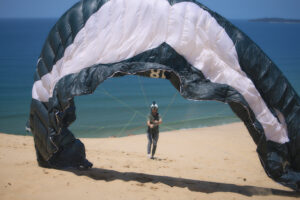
Rainbow Beach auxiliary firefighter Ben Brown-Graham worked with colleagues Brett Rathbone and Peter Sneath in a tug-of-war formation to gently pull Maverick up and over the cliff.
“Without LifeFlight Maverick’s rescue wouldn’t have been possible,” Ben said.
“We were able to dig into the sand and create a space for us to be able to pull him up slowly over the ridgeline and then up onto some flatter, safer ground.
“It was really impressive to see them come in with their assets and be able to drop into this really remote, really difficult location. And to do it quickly and easily. He was in the Sunshine Coast Hospital before we’d even got back to the station. If LifeFlight weren’t there and we didn’t have that asset available, it would have been a really lengthy and arduous recovery, which would have taken probably most of the night.”
Three months after his crash, Maverick got to shake hands and hug his QFD and LifeFlight rescuers and enjoyed his first post-accident paraglide on a perfect, blue-sky afternoon.
“It was unbelievable the work LifeFlight did,” he said. “The rescue crews undoubtedly saved my life. They are real-life superheroes. I had a lot of emotions in my head as I was being winched up. I was thinking how lucky I was to be in a country with rescue helicopters. The final scene of the Hunger Games was playing in my mind when Katniss was winched into the helicopter. What they did for me gave me a second chance at life. As a kid I wanted to become a helicopter pilot, and now that’s something that I have to do.
“I don’t think we should live in fear. And I think we need to do things that make us feel alive and that we love to do. I know that there are risks for paragliding but for me to not fly again would be much more of a loss. It’s great to be back doing something that I love.”
“LifeFlight managed to get me out of the worst situation of my life. I’m just stoked to be alive.”
